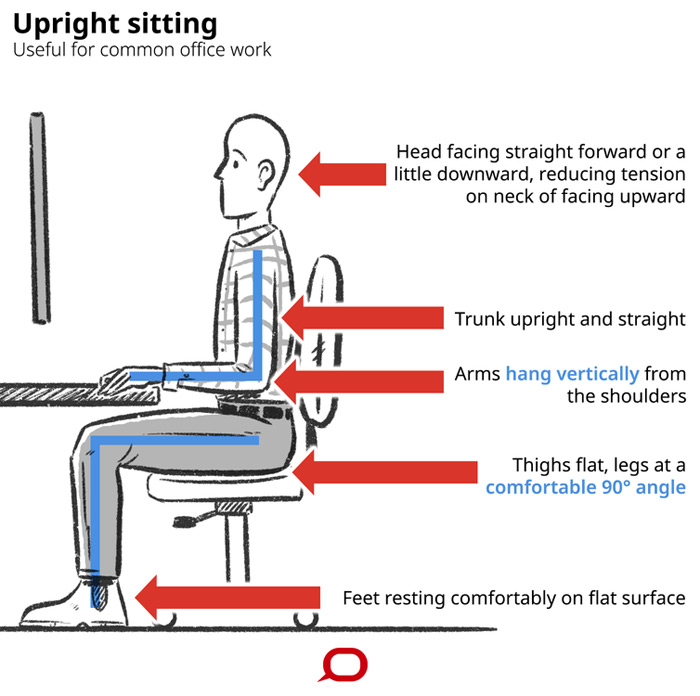现代人大部分清醒的时间都是坐着的,无论是在家、通勤还是上班。既然我们不得不久坐,那么采取正确的坐姿就很重要。很多人都以为正确的坐姿只有一种,但实际上,工作类型不同,适合你的坐姿也不同。
Option 1: upright sitting
选择一:挺拔端正地坐着
This is probably the posture you think of as “good” posture. The defining feature of this option is that the trunk is upright.
这很可能是你所以为的“良好”坐姿。这种坐姿的标志性特点是后背直直的。
A key component of upright sitting is that the feet can comfortably rest on a surface, whether the floor or a footstool. This position also makes it easy to adjust posture within the chair (fidget) and change posture to get out of the chair.
端正坐姿的一个关键要素是双脚能够舒服地放在平面上,无论是地板还是脚凳。这一姿势能够让你轻松地在椅子里调整坐姿(可以动来动去),也方便你改变姿势从而能够从椅子上站起来。
It’s also important the arms hang down from the shoulders vertically with elbows by the trunk, unless the forearms are supported on the work surface. Holding unsupported arms forward requires the muscles connecting the shoulder and neck to work harder. This often results in muscle fatigue and discomfort.
同样重要的是,胳膊要从肩部笔直地垂下,手肘靠在身子旁边,除非前臂搁在工作台上。把没有支撑的胳膊放在身体前面需要联结肩膀和脖子的肌肉更用力,这通常会导致肌肉疲劳和不适。
The head should be looking straight ahead or a little downwards. Looking upwards would increase tension in the neck and likely lead to discomfort.
头应该直直地向前看或稍微向下看。向上看会增加颈部的紧张感,也容易引起不适。
This posture is useful for common office tasks such as working on a desktop computer.
这一坐姿适用于普通的办公室工作,比如在台式机前工作。


新年伊始,听说有好多同学声称自己去年的读书li...

不知是不是因为今年疫情的缘故,总觉得时间过得...

2020年即将过去,本年度的【好书荐读】系列也迎...
